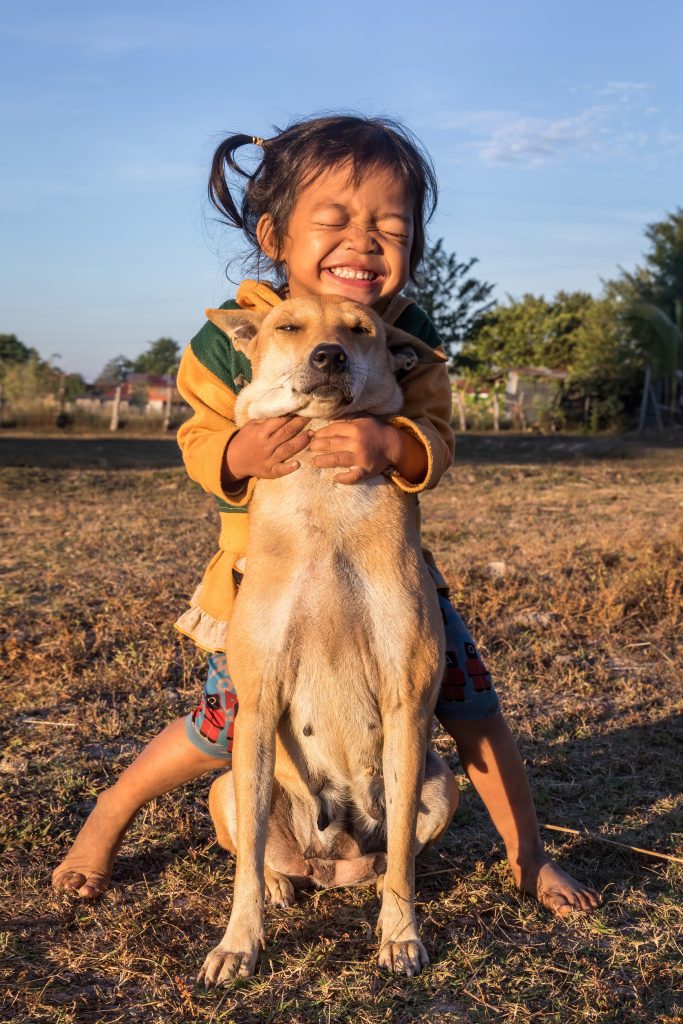The Influence of Age on Learning Behaviors in Pets

The Connection Between Age and Learning in Pets
Have you ever wondered how your pet’s age impacts their ability to learn? Understanding the relationship between age and learning behaviors in pets can shed light on their training needs and effectiveness. From puppies to senior pets, age plays a pivotal role in how animals absorb and respond to information.
Pets learn through an array of experiences, and these can vary significantly across different stages of their lives. Key factors that influence learning include:
- Neuroplasticity: Younger animals exhibit higher levels of neuroplasticity, making them more adaptable to new commands. This characteristic allows them to adjust their behavior based on new experiences, often leading to quicker mastery of training. For instance, a puppy may learn basic commands like “sit” and “stay” after just a few repetitions, as their brains are more malleable and eager to make new connections.
- Attention Span: Older pets may have shorter attention spans, which can influence their training sessions. It’s important to structure training sessions for senior pets to be shorter and more engaging, using frequent rewards or breaks to maintain focus. For example, a senior dog might benefit from playing games that involve retrieving or interactive toys that make learning fun without overwhelming them.
- Life Experiences: An older pet may have accumulated behavioral patterns that can either hinder or facilitate new learning. A dog that has developed a reputation for being stubborn might struggle with learning new tasks. However, previous training sessions might also provide a foundation for quicker learning. For instance, if an older dog has already mastered basic commands, introducing advanced tricks may be easier because they can build on established behaviors.
Research indicates that each life stage presents unique challenges and opportunities. For example:
- Puppies: They are often eager learners, soaking up commands like a sponge. Their innate curiosity motivates them to explore and engage, making this the ideal phase for socialization and basic obedience training.
- Adult Dogs: While they can learn quickly, established habits may take longer to modify. Adult pets may have developed routines that can hinder new training, meaning consistency and patience are crucial during this phase.
- Senior Pets: They might require more patience and tailored approaches to learning. Techniques such as positive reinforcement, calming environments, and gentle encouragement can significantly improve their learning experiences. Activities like scent training can also stimulate their minds without putting too much strain on their bodies.
As pet owners, understanding these age-related differences can enhance our training methods and strengthen our bond with our furry companions. Awareness of these factors not only aids in effective training but also enables you to appreciate your pet’s unique learning journey. To delve deeper into the ways age influences learning behaviors in pets, consider researching training techniques tailored to different age groups. This knowledge will empower you to provide the best possible care and support for your beloved animals throughout their lives.
DON’T MISS: Click here for essential pet health tips

The Stages of Learning: Adapting Training to Age
As pets progress through their lives, their learning behaviors evolve significantly. This evolution not only reflects biological changes but also experiences that shape their understanding of the world. By recognizing the unique characteristics associated with different age groups, pet owners can tailor their training methods to maximize effectiveness. Below are key insights into how learning behaviors differ across various life stages in pets:
- Puppy Stage (0-6 months): During this initial phase, puppies thrive on exploration and socialization. Their brains are developing rapidly, making them exceptionally receptive to new information. This is a critical period for owners to introduce fundamental commands, social interactions, and basic potty training. Puppy kindergarten classes can be a great way to foster their learning and general social habits with other dogs. Positive reinforcement, such as treats or praises, works wonders at this stage as they connect behaviors to consequences.
- Adolescent Stage (6 months to 2 years): As puppies transition into adolescence, they may exhibit heightened energy levels and occasionally test boundaries. This stage is marked by a shift in attention span, where distractions become more prominent. Although they possess the foundational skills learned in the puppy stage, reinforcing behavior requires a consistent routine and engaging training techniques. It’s beneficial to incorporate fun activities, such as agility training or scent work, to keep their interest piqued and channel their energy constructively.
- Adult Stage (2-7 years): Adult pets often feature ingrained behaviors and routines that can either help or hinder learning new tasks. Depending on their past training experiences, adult dogs may take longer to relearn commands or break bad habits. Owners are advised to be patient and to utilize positive reinforcement while maintaining a structured environment. Incorporating new tricks can also engage their curiosity and promote cognitive health, ensuring they stay mentally stimulated. Preventing boredom through diverse activities is vital for adult pets, as mental challenges can enhance their learning prowess.
- Senior Stage (7+ years): The elderly pet phase introduces a range of challenges, including reduced mobility and cognitive function. Senior pets may seem hesitant to learn new commands due to physical limitations or a slower processing speed. However, this does not mean they are incapable of learning. Tailoring training methods is essential; using gentle encouragement, shorter sessions, and engaging tasks, such as scent games, can stimulate their minds without causing stress. Recognizing that patience, empathy, and adaptability are key can create a supportive learning environment that promotes bonding.
With a comprehensive understanding of how age influences learning behaviors, pet owners can enhance the training experience across their companions’ lifetimes. Tailoring methods to each developmental stage not only fosters effective communication between pets and owners but also contributes to the overall well-being of the animal. By investing time in understanding these nuances, we’re ultimately able to create richer, more fulfilling experiences for our four-legged friends.
The Influence of Age on Learning Behaviors in Pets
As pets age, their learning behaviors undergo significant transformations influenced by both cognitive development and physical capabilities. Understanding these shifts is crucial for pet owners, trainers, and veterinarians alike. The ability to adapt training methods according to a pet’s age can greatly enhance the learning experience and enrich the quality of life.
| Age Group | Learning Characteristics |
|---|---|
| Puppies (0-6 months) | Highly absorbent to new commands and social cues; eager to learn through play. |
| Adult Dogs (1-7 years) | Increased focus and problem-solving abilities; can handle more complex training commands. |
| Senior Pets (7+ years) | May experience cognitive decline; best to use familiar commands and engage in gentle, consistent training. |
A deeper exploration of learning behaviors in pets reveals fascinating trends. For instance, studies have shown that older pets often retain the commands learned in earlier years but may struggle with new training due to decreasing memory retention. Therefore, employing a patient approach that reminisces on past learning can rekindle their abilities. Additionally, socialization tactics vary with age: younger pets thrive in multi-pet environments, while older pets may prefer quieter, controlled interactions.The impact of environment on learning abilities cannot be overlooked. Factors such as household dynamics, available time for training, and even the comfort of the pet’s surroundings contribute significantly to how well a pet absorbs information. Understanding this makes it possible to create optimal conditions for all age groups, enhancing their learning journey and fostering lasting behavioral patterns.
LEARN MORE: Click here for essential travel tips for your pet
The Role of Experience and Socialization in Shaping Learning Behaviors
Beyond mere age, the experiences and socialization a pet undergoes can vastly influence their learning behaviors. Pets are not just blank slates; they come with their own unique personalities, histories, and responses to the world around them. Understanding how these factors interplay with age can provide valuable insights for pet owners looking to enhance their companions’ learning capabilities.
- Socialization Benefits Across Ages: Early socialization is often touted as crucial for puppies, helping them to grow into well-adjusted adults. However, socialization remains important throughout a pet’s life. Adult pets can still benefit from new experiences and interactions. For example, introducing an adult dog to new dog-friendly parks or enrolling them in training classes designed for older dogs can help stimulate their mental resilience and willingness to learn. Studies show that dogs who regularly interact with other pets and diverse environments demonstrate increased cognitive flexibility and problem-solving skills.
- Impact of Previous Training: A pet’s prior training experience significantly affects their learning potential at every age stage. A well-trained adult dog may learn new commands more readily than a dog with inconsistent training history. Training apps and platforms tailored for different age groups can help refine methods that cater to specific backgrounds. For instance, a retired racing greyhound with little obedience training will require a tailored, incremental approach, whereas a well-trained rescue dog may be ready for advanced tricks and commands.
- Cognitive Aging in Senior Pets: While senior pets can still learn, cognitive decline can present challenges akin to human conditions such as dementia. Dogs and cats might struggle with memory lapses or slower reaction times. Acknowledging these limitations, owners should consider incorporating memory-boosting games into their routines. Puzzle toys that dispense treats can be especially effective, fortifying brain function and extending learning opportunities. Additionally, adjusting training sessions to focus on previously mastered commands can help rebuild confidence and provide a sense of accomplishment in older animals.
- Health Considerations: A pet’s physical health can also substantially affect their ability to learn. Conditions like arthritis or vision impairment may require adjustments to training techniques. For instance, older dogs with mobility issues might struggle with physical commands demanding agility. As such, incorporating low-impact activities, such as sitting or “stay” commands, supports their learning while respecting their physical limitations. Regular vet check-ups can help identify any health issues that need to be factored into training plans, ensuring the learning remains constructive and enjoyable.
- Emotional Influence: Lastly, the emotional state and behavior of pets play a significant role in their capacity to learn. Animals, like humans, can experience anxiety or stress, which can inhibit learning. As they age, pets are more prone to changes in behavior due to stressors such as moving to a new home or losing a companion. By creating a calming training environment, utilizing tools such as relaxing music or structured training routines, owners can mitigate anxiety, thereby fostering an atmosphere conducive to efficient learning.
Thus, while age is a significant factor in shaping a pet’s learning behaviors, the influence of socialization, previous experiences, physical health, and emotional resilience cannot be overlooked. Awareness of these elements empowers pet owners to create holistic training strategies that adapt to their four-legged companions’ unique needs throughout their lifetimes.
DISCOVER MORE: Click here to learn how pets can boost your heart health
Wrapping Up: The Impact of Age on Pet Learning Behaviors
In conclusion, understanding the influence of age on learning behaviors in pets reveals a complex interaction of factors that go beyond mere age. As discussed, experiences and socialization continually shape a pet’s ability to learn throughout their life stages. From the early days of puppyhood, where social exposure sets the foundation for adulthood, to the ongoing opportunities for learning even in senior pets, the impact of a well-rounded social life cannot be overstated.
Prior training experiences also play a pivotal role, where a well-trained pet can often learn new commands more efficiently than one with inconsistent training. This underscores the importance for pet owners to understand and tailor their training techniques according to their pets’ unique backgrounds. Moreover, cognitive aging, health considerations, and emotional well-being contribute significantly to a pet’s learning potential. With a keen awareness of these aspects, owners can adapt their training approaches to best suit their pets’ physical and mental capabilities.
Ultimately, recognizing that learning is a lifelong journey for pets allows owners to cultivate an enriching environment that promotes cognitive engagement and social growth. Through patience, creativity, and dedicated effort, pet owners can enhance their companions’ learning experiences, ensuring that each pet, regardless of age, can continue to thrive and bond with their humans. Engaging with resources such as training workshops or consultation with veterinarians can further this mission, establishing a nurturing backdrop where pets flourish mentally and emotionally.



